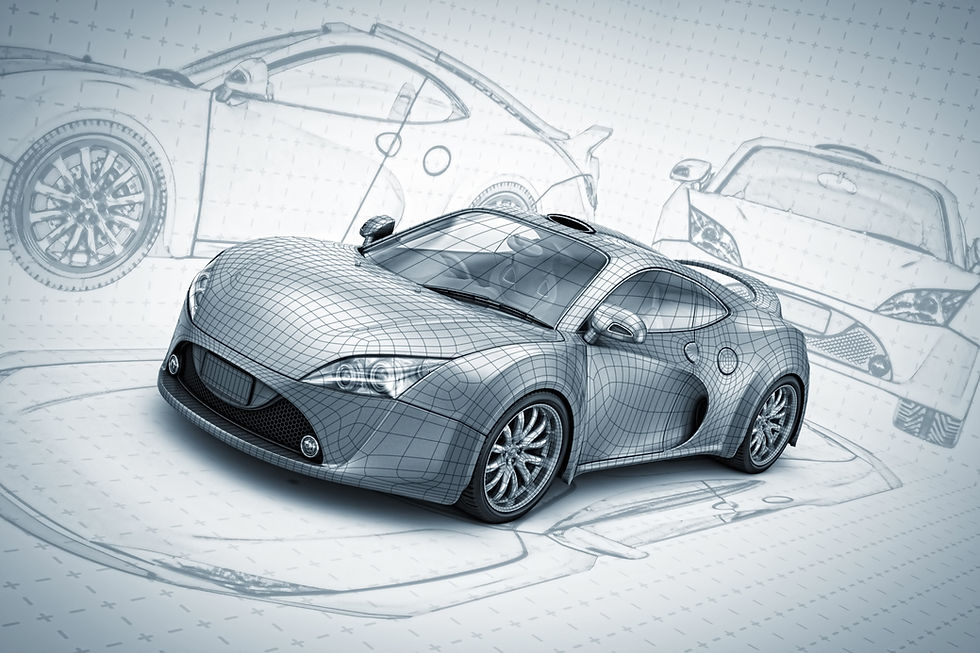Advances in Vehicle electrification and China - 5 trends to watch in 2023
- Tamas Rozsa
- Feb 11, 2023
- 4 min read
In 2022 global vehicle sales were flat, but with large geographical differences: European sales fell 6% again, like every year since 2019, from 20.7 million vehicles sold in 2019 to 14.8 million in 2022. On the other hand, China and South-East Asia grew, leaving the global market at 81 million. The European market is expected to grow slightly in 2023, but the optimistic forecast scenario for 2023 will still stay below 2021 sales volume. The expected slight growth is mainly due to the unmet demand market of previous years, mainly caused by chip shortages.
The risk of the forecast is quite high due to the following factors:
- Macroeconomic risks: possible recession, persistence of inflationary environment
- Uncertain end of the war in Ukraine
- Negative risk is the COVID situation in China that could cause another short-term supply disruption
- Extension of state electric vehicle support could be a positive factor
The forecast of the Automotive Industry still tend to be slightly optimistic with negative risks, which could result in another stagnant year in 2023 in Europe.
It's also worth taking stock of the few certainties that automotive industry players can expect in 2023, according to Top Tier Consultants.

Five trends for the automotive industry in 2023:
1- Electric vehicles are on an unstoppable upward trajectory, with a further +50% sales increase forecasted in Europe in 2023, given that most of the microchip shortage is already behind us. Worldwide sales of electric vehicles are likely to exceed 10 million units in 2023, while sales of electrified vehicles are expected to reach 25 million units. Sales growth is clearly being driven by developed countries and China, while emerging markets falling behind and the ap widens.
2- As the chip shortage in the supply chain eases, battery shortages are expected to increase. The lost production of 10 million vehicles in 2021 due to chip shortages is expected to fall below 3 million units in 2023. Finally now efforts of both OEM’s to vertically integrate and directly source semiconductors/chips bear fruit as they are following the positive example of Tesla. Also, the economic policies of the US and Europe to subsidize chip production, finally seem to be having an effect. However, two new challenges for the supply chain emerge. A short-term disruption is already looming due to COVID spike in China, but also a new medium-term risk is emerging. Currently 64% of global battery manufacturing capacity is concentrated in China, so until local battery production is built up in Europe, including finding sources of raw materials/ lithium, further supply disruptions are likely.
3- Battery cell technology breakthrough in 2023. A seemingly small technological step towards creating more efficient cooling of cylindrical battery cells has led to a major breakthrough in increasing the size and performance of cells, being rolled out in mass production this year. The traditional 18 mm wide and 65 mm long cells can be replaced by 46mm wide and up to 120mm long cells, allowing a 12-fold increase in cell volume. Among other incremental innovations, this will lead to an increase in electric car range of more than 60%, while reducing costs by 50% and investment needs by 30%. The energy density is close to the specifications of solid-state batteries, which are still challenging to mass produce. Mass production of the first passenger car with an electric range of over 1000 km is therefore expected to be announced in 2023.
4- The price of electric vehicles will reach parity with that of internal combustion engine vehicles later than expected: between 2028-30 rather than 2025. Raw material prices of steel, aluminum, copper, plastics and liquids started to recede in the second half of 2022, but prices for critical raw materials for batteries remain high and there may even be a temporary shortage of lithium. Another negative factor for electric vehicles is that government subsidies for them are gradually being phased out and even taxing electric vehicles start to be introduced. In addition, electricity prices have risen much more than fossil fuel prices, which means that not only are the prices of electric vehicles falling less than expected, but they are also less affordable to operate than internal combustion engine vehicles. As a result Hungary and Central and Eastern Europe, where car buyers are more rational and cost sensitive, will find itself even further behind high-income Western European countries when it comes to emobility. EU regulation may still support the domestic electric car markets, but for the reasons outlined above, the uptake of electric cars in developing countries will suffer significant delays.
5- A breakthrough in the uptake of Chinese-brand electric vehicles is expected in Europe. In addition to low battery and manufacturing costs in China, it is also clearly ahead in battery technology. Chinese car design is catching up, with safety, durability and quality already only very slightly behind Western brands. This will be particularly noticeable in the lower end of the small car market, which is disappearing in Western markets, where traditional local OEM’s are moving out, both premium and mass market brands (see Ford Fiesta, Peugeot/Citroen C1, Audi A1, possibly VW Polo etc.). The vacuum in the small car market is creating space for Chinese brands, now of reasonable quality but at a much cheaper price. All eyes will be on the significant European growth of BYD and Wuling.
Conclusions:
Given the above trends, the extent to which a country can participate in the manufacturing supply chain of e-mobility is hugely important. The labor requirements to produce electric vehicles are lower than those for the production of internal combustion engine vehicles across the whole manufacturing and supply chain. For this reason, a country or region will only be able to maintain its industrial employment if it increases its share of electric vehicle products and components produced.







Comments